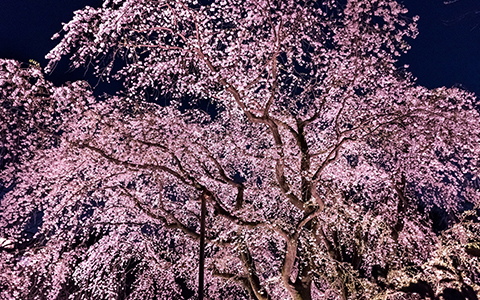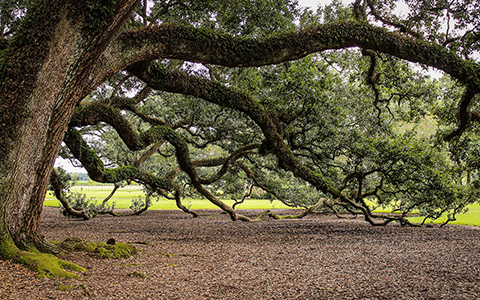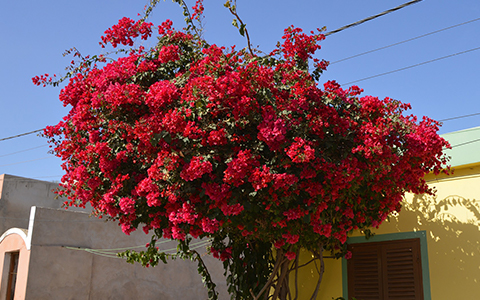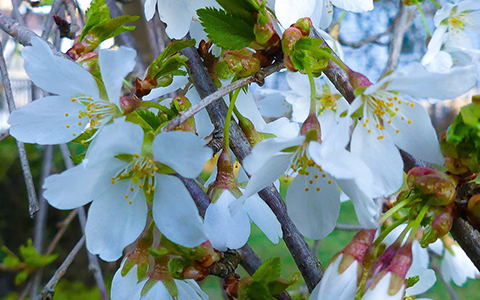
Avoid planting run-of-mill trees and having a basic landscape. Knowing the unique trees that can grow in your Alpharetta landscape will create a captivating aesthetic and curb appeal.
72tree.com gathered the following species and growing information about 7 of the most beautiful trees to plant in your Alpharetta, Georgia, landscape.
1. Southern Live Oak (Quercus virginiana)

Live oak grows to be a massive, picturesque, sprawling tree with magnificent horizontal and arching branches that form a broad, rounded, and majestic canopy. A squat, tapering trunk supports the massive, irregular limbs, often resting their “elbows” on the ground.
Size at Maturity – On average, this species reaches 50 feet in height with an 80+ foot spread.
Soil Requirements – The live oak thrives in acidic, alkaline, loamy, moist, sandy, well-drained, and clay soils.
Sun Exposure – Full sun to partial shade
Water Needs – While your oak tree establishes its root system and matures for the first 2 to 3 years, you should water it weekly. It will take about 10 gallons of water per inch of trunk diameter to keep this species thriving.
Hardiness Zone – 7 through 10
2. Rhododendron (Rhododendron)

Rhododendron, or “red tree,” refers to the red flowers and woody growth of some species, but rhododendrons can range in habit from evergreen to deciduous and from low-growing shrubs to tall, stunning trees.
Size at Maturity – This species can reach 5 to 20 feet tall with a 3 to 8-foot spread (depending on the variety).
Soil Requirements – Rhododendrons thrive in well-draining soil with abundant organic matter.
Sun Exposure – Full sun
Water Needs – Water rhododendrons twice weekly during the first growing season. Once established, only water them during dry periods.
Hardiness Zone – 4 through 8
3. Japanese Maple (Acer palmatum)

This incredible maple shows off bright green foliage in spring and summer, then turns golden yellow and red in the fall.
Size at Maturity – This species can reach from 15 to 25 feet tall with a 15 to 20-foot spread.
Soil Requirements – Japanese maples thrive when planted in well-drained, acidic soil high in organic matter.
Sun Exposure – Dappled or Afternoon Shade
Water Needs – Water this species heavily twice weekly during normal weather and increase waterings to three or four times during droughts.
Hardiness Zone – 5 through 8
4. Weeping Cherry (Prunus subhirtella)

This cherry tree variety generally features non-fragrant pale pink to white flowers in spring, pea-sized blackish (inedible) fruits in late summer, and ovate to lanceolate green leaves gently swaying on drooping branches and stems.
Size at Maturity – This species can reach from 20 to 25 feet tall with a 15 to 20-foot spread.
Soil Requirements – Weeping cherry trees are highly-adaptable to a range of soil types but flourish in loose, well-drained, loamy soil.
Sun Exposure – Full sun
Water Needs – A weeping cherry tree should be watered two to three times weekly during its first year. Afterward, it should only be watered when the top three inches of soil are dry.
Hardiness Zone – 4 through 9
5. Eastern Redbud (Cercis canadensis)

This tree species displays a variety of colors throughout the year. Leaves emerge reddish, turning vibrant green as they expand. The tree’s foliage is dark green in summer and yellowish in autumn. The tree’s showy flowers are pea-like and rosy pink with a purplish tinge.
Size at Maturity – This species can reach from 20 to 30 feet tall with a 25 to 35-foot spread.
Soil Requirements – Eastern redbud trees thrive in acidic, alkaline, loamy, moist, nutrient-rich, sandy, well-drained, and clay soil.
Sun Exposure – Full sun to partial shade
Water Needs – Water your eastern redbud two to three times weekly during its first year. Afterward, it should only be watered when the top three inches of soil are dry.
Hardiness Zone – 4 through 9
6. Rainbow Eucalyptus (Eucalyptus deglupta)

The rainbow eucalyptus is an evergreen tree with drooping spear-shaped, silvery-green leaves and curious clusters of tiny white flowers. The tree’s most stunning feature is the trunk, which grows rainbow bark in vibrant (nearly fluorescent) green, blue, orange, red, and purple shades. When planted in cooler areas, this tree species will require shelter from freezing wind and extremely low temperatures.
Size at Maturity – This species can reach 60 to 80 feet tall with a 20 to 30-foot spread.
Soil Requirements – This species thrives in sandy, loamy soils that are fertile, moist, and well-drained.
Sun Exposure – Full sun
Water Needs – Water your tree daily for best results, never flooding the tree with standing water.
Hardiness Zone – 9 through 11
7. Red Oak (Quercus rubra)

Most red oak leaves fade to brilliant red or orange-red shades in fall and will hold their color longer than other deciduous trees. Some red oak trees have yellow fall foliage instead of red.
Size at Maturity – This species can reach 60 to 75 feet tall with a 45-foot spread.
Soil Requirements – Like other oak species, red oak thrives in acidic, loamy, moist, sandy, well-drained, and clay soils.
Sun Exposure – Full sun to partial sun
Water Needs – While your oak tree establishes its root system and matures for the first 2 to 3 years, you should water it weekly. It will take about 10 gallons of water per inch of trunk diameter to keep this species thriving.
Hardiness Zone – 3 through 8
Beautiful Landscape Trees
In this article, you discovered essential species and growing tips for seven of the most attractive tree species for Alpharetta, Georgia, landscapes.
Knowing which tree species possess beautiful features will help you add intrigue and stunning visuals to your Alpharetta, Ga, landscape.
Not knowing the tree species capable of enhancing your Alpharetta, Georgia yard will leave your landscape dull and impressive.
Sources:
plants.ces.ncsu.edu/plants/quercus-virginiana/
hgic.clemson.edu/factsheet/rhododendron-2/
edis.ifas.ufl.edu/publication/ST023
bellarmine.edu/faculty/drobinson/WeepingCherry.asp
extension.umass.edu/plant-identification/eastern-redbud
gms.ctahr.hawaii.edu/gs/handler/getmedia.ashx?moid=6149&dt=3&g=12
naturalresources.extension.iastate.edu/forestry/iowa_trees/trees/red_oak.html
No comments:
Post a Comment
Note: Only a member of this blog may post a comment.